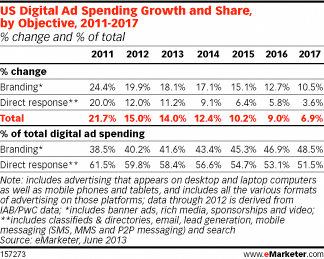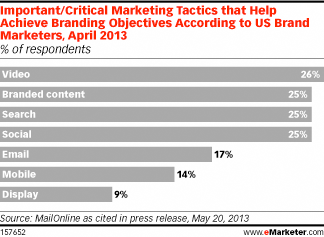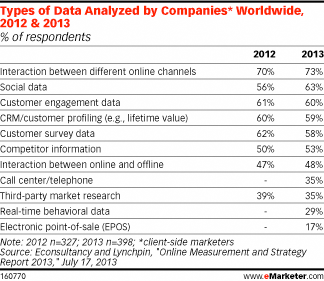Making Sense of Blurring Channels marks the latest Key Digital Trend
September 12, 2013
![]() Omnichannel marketing first took hold among retailers anxious to tap into consumers’ time-, place-, platform- and device-shifting habits, and digital continues to blur where, when and how people interact with marketers, according to a new eMarketer report, “Key Digital Trends for Q3 2013: How Omnichannel Is Blurring Boundaries Everywhere.”
Omnichannel marketing first took hold among retailers anxious to tap into consumers’ time-, place-, platform- and device-shifting habits, and digital continues to blur where, when and how people interact with marketers, according to a new eMarketer report, “Key Digital Trends for Q3 2013: How Omnichannel Is Blurring Boundaries Everywhere.”
Expansion, and now contraction, in what constitutes a consumer is due in part to the erosion in meaning of established terms like “mobile.” For example, when a majority of mobile device usage takes place at home, mobile no longer differentiates a sedentary consumer from one who is on the go. The mobile device is merely another representation of the consumer, increasingly indistinct from any other computing device.

Just as the lines between online and offline consumers have blurred, divisions between branding and direct-response advertising are also eroding. eMarketer estimates that out of a total of $41.94 billion in US digital ad spending in 2013, nearly 60% will go toward direct response. However, those allocations are set to shift as digital absorbs an ever-greater share of consumers’ media time. In 2017, eMarketer projects branding and direct response will enjoy nearly equal portions of the digital advertising pie.

And the boundaries between what constitutes a branding vs. direct-response campaign are also dissolving.
Search has typically been considered a direct-response format. However, by virtue of consumers’ reliance on both paid and organic search to find virtually everything, regardless of device or platform, search marketers have rightly argued for the branding power of this tactic. In an April 2013 MailOnline survey of US digital advertising and marketing executives, respondents rated search a close second to video as a marketing tactic critical for achieving branding objectives.

Contextual factors will help determine the effectiveness of ads served to a given device—for example, location (where the device is used), time (seasonality and daypart) and timeliness (the ability to respond to consumer interest and intent in real time).
Tracking and managing multiple consumer interactions across screens, platforms and touchpoints are emerging as the key challenge for today’s CMO. This explains the growing use of data management platforms (DMPs).
Still, even as marketing platforms can do a good job of tracking and responding to consumers’ online activities, there is a data gap when it comes to online-to-offline linkages. Polling by research firm Econsultancy and data consulting company Lynchpin determined that nearly three-quarters of companies worldwide were analyzing interactions between different online channels, while just under half were looking at online-to-offline interactions.
In an age of overlapping activities that are blurring longstanding divisions from advertising to commerce, marketers need to prepare to be everywhere consumers are—lest they want to risk being stuck nowhere.
Courtesy of eMarketer































